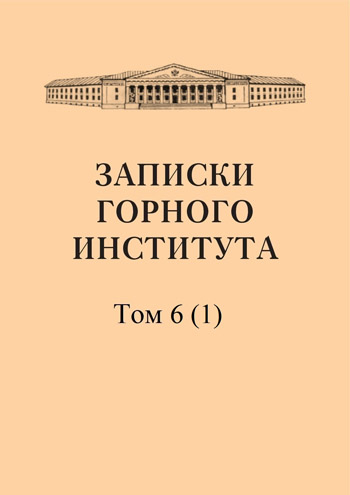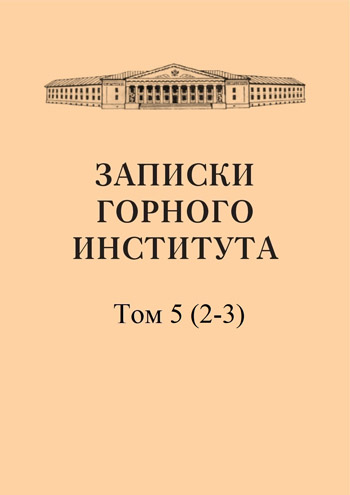-
Date submitted1915-06-17
-
Date accepted1915-08-08
-
Date published1915-12-01
Drum governors. Theory, calculation and design of drum govermnors
- Authors:
- L. B. Levenson
Precise control of the speed of engine machines is one of the most important tasks of modern mechanical engineering. This book aims to fill these gaps and presents the experience of a systematic presentation of the practically applied theory of drum governors, mainly based on our own research and six years of experience in the design and construction of drum governors . The work covers in detail the following topics: centrifugal and drum governors, kinematics, statics, dynamics of drum governors, their design and other issues.
-
Date submitted1915-06-06
-
Date accepted1915-08-23
-
Date published1915-12-01
Some problems related to ruled surfaces of the 3rd order
- Authors:
- E. S. Fedorov
If through some point on a quadratic cylinder we draw a secant plane (defining the conoprime k), a tangent plane and in it some oblique line d (not in the plane of the curve k and not generating the cylinder), and then from each point of this line we draw in the diametrical plane of the cylinder there are two rays through the points of the curve k, then we obtain a ruled surface of the 3rd order.
-
Date submitted1915-06-12
-
Date accepted1915-08-24
-
Date published1915-12-01
Ayat gold and cinnabar deposit
- Authors:
- D. F. Murashov
The described deposit is located in the Yekaterinburg district of the Perm province, in the No. 0 corner of the 109th quarter of the Ayat dacha of the Verkh-Isetskii District 1. A vein rock of igneous origin, cutting through the strata of the host rocks like dikes, is a rock of porphyry structure, sometimes with a clear composition, and the segregations are large albite grains, varying from No. 0 to No. 4, the bulk consists of small crystals, usually elongated in the direction of flow the same albite, quartz and small orthoclase grains that cannot be examined optically and can only be detected by chemical analysis; inclusions of crystals of apatite, sulfur pyrite, sometimes tourmaline and antimony luster are observed almost everywhere. In the form in which the described deposit appears based on the work carried out to date, it has no industrial significance, but it must be borne in mind that many very significant things about it have not yet been clarified."
-
Date submitted1915-06-23
-
Date accepted1915-08-02
-
Date published1915-12-01
Affinity of the second of parabolas of rays with two constant rays and a system of rays on a plane
- Authors:
- E. S. Fedorov
Systems of points and rays on a plane, as is known, are not related. But the system of points is related to the seconds of conoprimes of points and rays that have three constant elements, and of those having two constant elements, only conoprimes of points (tetraprims) are related. We will now show that the seconds of parabolas of rays with two constant rays are related to a system of rays on a plane.
-
Date submitted1915-06-06
-
Date accepted1915-08-04
-
Date published1915-12-01
On the minimal problem in the theory of differential equations of oscillations of an elastic inhomogeneous rod
- Authors:
- N. M. Krylov
The question of the existence of so-called “fundamental functions” for differential equations of higher orders has been the subject of research in a number of works, but further processing is undoubtedly possible in the sense of applying various methods to its solution. This article represents an attempt to generalize the method of the American geometer Max Mason, which he outlined for 2nd order differential equations, to the case of 4th order differential equations, which, as is known, leads to the question of vibrations of an elastic inhomogeneous rod. Kolganovka August 6-8, 1915.
-
Date submitted1915-06-04
-
Date accepted1915-08-02
-
Date published1915-12-01
A simple way to construct correlative elements in related seconds of points, conoprimes of points and conoprimes of rays with three constant elements
- Authors:
- E. S. Fedorov
The projective relationships elucidated in the previous note would receive a high degree of clarity if it were possible to establish by simple construction such a correlativity between the conoprimes of the second and the points of the plane such that the extraelements of one correspond to the extrapoints of the other. A second of conoprimes of rays contains a prima that is represented by a pair of points (more precisely, a pair of linear prime rays). Since in each linear example there are three such special conoprimes (of which one pair can be imaginary), it is quite obvious that in the case of special conoprimes of rays a 3rd order curve is correlative.
-
Date submitted1915-06-23
-
Date accepted1915-08-07
-
Date published1915-12-01
The theory of axial collineations as an extension of Steiner's theory of conoprimes (Kegelsсhnittbüschel)
- Authors:
- E. S. Fedorov
According to Shteiner’s famous theory, two given involutions of pairs of points on straight lines on a plane determine the involution on any straight line on the plane, that is, a full second of involution. The determining factor of all these involutions is the linear prime of curves, namely conoprime (Kegelschnittbüschel according to Steiner), having common two pairs points, of which not only one, but both can be imaginary. Each straight line intersects each prime curve at a pair of points of the involution belonging to it. Specifically, we can define collineations by two axes without any involutions. If we call the axes whose points are the real double points of all involutions real, and call the axes of isotropic involutions imaginary, then we obtain that any axial collineation can be defined by a pair of axes, real or imaginary (see article).
-
Date submitted1915-06-10
-
Date accepted1915-08-02
-
Date published1915-12-01
Extension of the construction of the previous note to conoprims with two or one constant element
- Authors:
- E. S. Fedorov
In the previous note, we solved the problem of transferring all kinds of constructions made on a plane into a system of connotations of points and rays; and conversely, we reduced the solutions of all kinds of problems in seconds of connotations of points and rays, having three constant elements, to ordinary problems on a plane. Naturally, the idea arises to extend the solution to those simplest cases when in the seconds of conoprimes there are only two or only one common element.
-
Date submitted1915-06-09
-
Date accepted1915-08-03
-
Date published1915-12-01
Collineation cycles and linear primes of conoprimes and conoseconds
- Authors:
- E. S. Fedorov
On a conoprime we can arbitrarily take two groups of points, four in each, and use them to establish collinearity of a general nature (see article). A cycle can consist of a different number of points, up to infinity. If, for example, a point in a collineation is self-homologous , then the entire cycle consists of one single point; if we have double homology of points A and A', then the entire cycle is reduced to two points, etc. In the general case, a cycle embraces a significant number of points or even an infinite number, and it may happen that all the points of a conoprime are part of one cycle. If collineation, somehow established from these points, makes the conosecond self-homologous, then the problem of constructing the points of the latter is reduced to a simple problem of collinear constructions.


